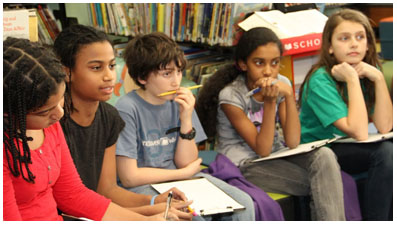 Jill Eisenberg, our Resident Literacy Expert, began her career teaching English as a Foreign Language to second through sixth graders in Yilan, Taiwan as a Fulbright Fellow. She went on to become a literacy teacher for third grade in San Jose, CA as a Teach for America corps member. She is certified in Project Glad instruction to promote English language acquisition and academic achievement. In her column she offers teaching and literacy tips for educators.
Jill Eisenberg, our Resident Literacy Expert, began her career teaching English as a Foreign Language to second through sixth graders in Yilan, Taiwan as a Fulbright Fellow. She went on to become a literacy teacher for third grade in San Jose, CA as a Teach for America corps member. She is certified in Project Glad instruction to promote English language acquisition and academic achievement. In her column she offers teaching and literacy tips for educators.
While teachers are always encouraging their students to write, the presence of an author can be the turning point that hooks students on writing—especially when the visiting author has written one of the first books that really resonates with students.
point that hooks students on writing—especially when the visiting author has written one of the first books that really resonates with students.
“I literally have no idea where my next book will come from until I stumble across something in the real world that absolutely floors me,” asserted G. Neri, author of Yummy: The Last Days of a Southside Shorty and Chess Rumble, recently to a room of seventh-graders in Spanish Harlem.






 It started when my co-worker, Jamie Steinfeld, asked me to booktalk some realistic fiction for her sixth-grade Humanities class. A girl asked a question about Return To Sender—“Why is there a bird on the cover?”—and we were off. Good question! Yes, the hardcover does have a bird. And does anyone notice anything about the paperback? See how the boy has his face turned toward us, and we can see his blond hair, but the girl from Mexico has her back to us and we can’t tell what race she is? What’s up with that?
It started when my co-worker, Jamie Steinfeld, asked me to booktalk some realistic fiction for her sixth-grade Humanities class. A girl asked a question about Return To Sender—“Why is there a bird on the cover?”—and we were off. Good question! Yes, the hardcover does have a bird. And does anyone notice anything about the paperback? See how the boy has his face turned toward us, and we can see his blond hair, but the girl from Mexico has her back to us and we can’t tell what race she is? What’s up with that?

